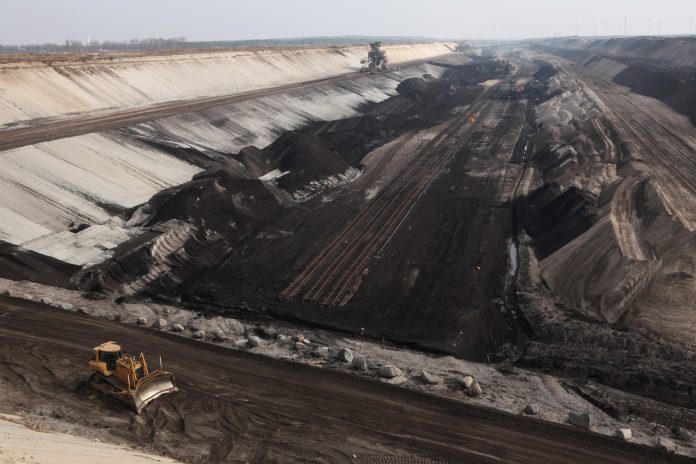Increased demand for renewables increases carbon exhaustive mining, so how can supply chain emissions be reduced?
Have you ever heard the term “Carbon Majors”? This is named used to describe a database of the world’s worst 100 organisations in terms of greenhouse gas emissions (GHG). This database is maintained by CDP, which is a “global environmental impact non-profit, providing a platform for companies, cities, states and regions to report information on their climate, deforestation and water security impacts”.
The top GHG producers
In their most recent report, CDP reveals 22 of the top 24 GHG producers operate in the fossil fuels extraction sector, with two, BHP and Rio Tinto, being predominantly mineral extraction, mining corporations.
Wind turbines, solar panels and electric cars are just a few of the green technologies which rely on mining for essential materials used in their manufacture. The significant increase in global demand for these types of technologies, will inevitably lead to significant increases in the GHG output from mining corporations.
Experts estimate the production of the critical metals needed in electric vehicles, such as nickel, praseodymium, neodymium, cobalt, dysprosium and lithium, would have to increase threefold over the next 10 years to meet projected global demand.
As many mines are remote and off-grid this typically means almost all of their energy needs are provided by fossil fuels, which explains why the two mining corporations in the top 24 Carbon Majors list, also happen to be considered the two largest mining corporations in the world.
Shareholder pressure at Rio Tinto resulted in a pledge to invest $1.5 billion in the coming five years, which represents the largest decarbonisation investment in the mining sector. Their goal is to reduce direct emissions by 15 per cent in 10 years and to become carbon-neutral by 2050 and after selling off its last coal assets in 2018, Rio Tinto is now the only diversified global mining corporation who does not extract fossil fuels.
Since this pledge was made Rio Tinto has approved a $98 million investment to build a solar plant, which will power their new Koodaideri iron ore mine in Australia, which is due to open in 2021.
The 34-megawatt solar plant will supply 100% of the mine’s electricity needs during peak solar power generation times and around 65% of the mine’s electricity demand during off peak times using a lithium-ion battery energy storage system.
According to Rio Tinto, this facility will lower annual CO2 emissions by about 90,000 tonnes compared to conventional fossil fuel powered generation, which is the equivalent of taking around 28,000 cars off the road.
Whilst this is a welcome announcement, it will only address emissions from a single mine that has not yet opened, and which does not contribute to Rio Tinto’s current ranking in the Carbon Majors list.
What else can be done?
Mining corporations have a range of options available to them such as improving mining processes and reducing waste, but their biggest challenge is the transportation of extracted minerals and metals, which are restricted by the available options of fossil fuel powered modes of transport.
Unfortunately, in off-grid remote mining areas there are no electric trains and nobody has yet built an electric truck capable of hauling 500 tonnes of rocks from a mine to the rail link and there is no such thing as an electric dry bulk shipping vessel, leaving companies like Rio Tinto with no choice but to rely upon the only available means of transportation, which use fossil fuels.
Rio Tinto has its own transportation network and their own fuel supply network to insulate their operations from disruption, which is one of the reasons they are currently considering trials of a nanotechnology based fuel additive, proven to reduce fuel consumption and emissions by unprecedented levels.
This product seems somewhat niche though, as it requires end users to control their fuel supply and storage to allow their fuel to be treated, which actually makes Rio Tinto an ideal candidate for trials. Early indications suggest trials in their rail network are the first steps being considered.
A successful trial?
With an estimated annual fuel consumption of 160 million litres, the use of this product would deliver an annual CO2 reduction in the region of 428,000 tonnes. With Rio Tinto setting a target of a 15% CO2 reduction from operations in 10 years, a successful trial could be a gateway to achieving their goals before the deadline and trigger a chain reaction across the mining sector to follow suit.
BHP has also made an emissions reduction pledge, which at 30% over 10 years is double that of the Rio Tinto target, but BHP plans to continue investing in oil and gas.
BHP plans to achieve their target by “increasing the use of renewable energy at its mines and reducing its consumption of diesel by electrifying its fleet of haulage trucks and other equipment”.
BHP has also committed to “helping develop technologies and approaches to make steelmaking 30% less carbon intensive and shipping 40% less carbon intensive”.
Whilst these commitments are a step forward, there is a distinct lack of specifics and it’s difficult to see their pledges as little more than a public relations exercise designed to appease shareholders.
Critics of these corporations point out that their refusal to identify any specifics on reducing scope 3 emissions is an indication their announcements are a token gesture and they are deliberately choosing to fall short of the Paris Agreement’s ultimate goal of holding global warming to less than 1.5C.
So whilst it is clear mining corporations are at least trying to reduce emissions, it is also clear they could be doing a lot more.











